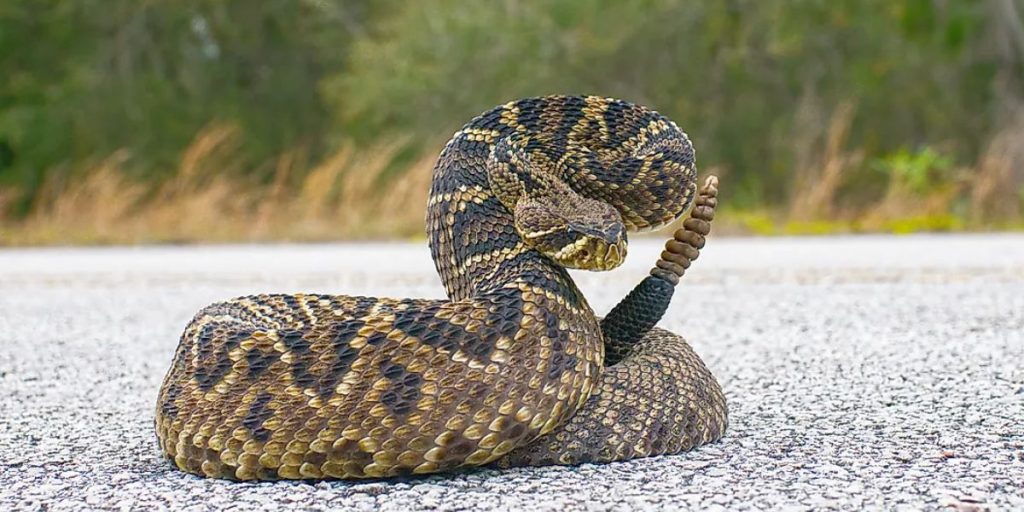Alabama boasts stunning landscapes, a deep historical heritage, and a warm, inviting atmosphere. People enjoy the stunning mountain trails and the quick drive to the sandy beaches along the beautiful Gulf Coast. When visiting the southern Cotton State, it’s essential to stay aware of the local wildlife, just as you would in any travel destination. Although many animals in Alabama are safe, some can be dangerous to people. Discover three of the most dangerous snakes that inhabit Alabama.
Cottonmouth
The Cottonmouth snake is commonly referred to as a water moccasin. These creatures thrive in areas near water, and Alabama is rich with its numerous lakes and rivers. Encountering a cottonmouth in nature typically results in the snake trying to flee the scene. It could disappear before you even realize it’s present. They can be very protective of their space. If a cottonmouth is showing aggression, it’s likely that you’ve ventured too near its nest.
Copperhead
In Alabama, the Copperhead snake is a frequently encountered venomous species. Like the cottonmouth, it claims its territory. Many individuals who have experienced an unpleasant interaction with a copperhead have either approached its nest or encountered it unexpectedly. The venom of a copperhead is less potent compared to certain other snakes; however, those bitten can suffer significant pain, swelling, and irritation.
Rattlesnake

Alabama is home to several species of rattlesnakes. While they may not be as prevalent as others on the list, their presence is significant enough to warrant your attention. One positive aspect of rattlesnakes is their natural alert mechanism. Approaching them will trigger a warning; they shake their tail, signaling that you are too close for comfort. If you hear that unique sound, it’s best to distance yourself.
Eastern Diamondback Rattlesnake
The eastern diamondback rattlesnake holds the title of the largest rattlesnake species globally. This snake is robust and can grow nearly seven feet long, with most adults measuring between four and five feet. The venom from the eastern diamondback rattlesnake targets blood, tissue, and the nervous system. The eastern diamondback rattlesnake mainly preys on small mammals like rabbits, mice, and rats. Additional food options consist of squirrels and birds that live on the ground.
Pigmy Rattlesnakes
In Alabama, you can find three different subspecies of pigmy rattlesnakes. Pigmy rattlesnakes are, as their name suggests, small versions of rattlesnakes. Known as “ground rattlers”, these creatures grow to lengths between 15 and 24 inches when fully mature, and when coiled, they are about the size of a loblolly pine cone.
Read More: Hidden Wildlife Hazards: Meet the Top 5 Most Dangerous Animals in Maryland
The western pigmy rattlesnake is located solely in the far western part of central Alabama, though its exact boundaries remain unclear. Various subspecies and their intergrades can be found across much of the state. Pigmy rattlesnakes are located beyond Alabama, spreading across Florida and the Florida Keys, extending west to Oklahoma and Texas, moving north through Tennessee into Kentucky, and reaching east to North Carolina.
Coral Snake
Alabama boasts a stretch of coastline. Along the shore, you can spot various fish, turtles, crabs, and birds, and every now and then, a coral snake might make an appearance. These creatures are elusive, resulting in infrequent observations. They can be easily recognized by their vibrant patterns when spotted. Their venom can be powerful and occasionally lethal.
Conclusion
Alabama hosts a variety of snake species. Some of these creatures pose no threat and can actually be beneficial; for instance, snakes play a significant role in managing the rodent population. Some snakes have venom that can be very dangerous, potentially even deadly, to both humans and pets. Each year in Alabama, more than 200 individuals experience bites from venomous snakes. Understanding the distinction and recognizing the threat can assist you in steering clear of a possibly life-threatening scenario.
Also Read: Hurried Escape from Minnesota: 5 Towns People Are Leaving Behind